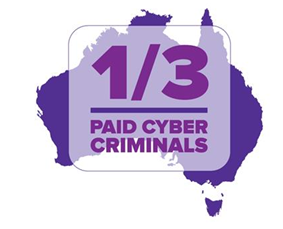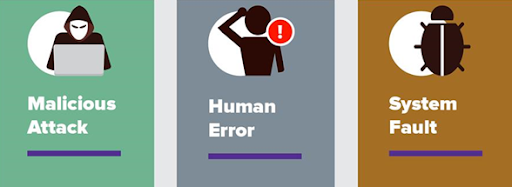In 2021, many Australians fell victim to ransomware attacks and the accounting industry was in the top three industry sectors to notify data breaches.
In 2021, many Australians fell victim to ransomware attacks and the accounting industry was in the top three industry sectors to notify data breaches.
The Office of the Australian Information Commissioner (OAIC) reported an increase of 24% in ransomware incidents from the previous six-month reporting period. Average ransom payments have risen dramatically in Australia and New Zealand over the last year as malicious actors have become more sophisticated. Whereas cybercriminals used to be looking for a vulnerability, now they are more targeted in their approach and goals. One of the biggest costs of cyber attacks and incidents is not the price of the ransom itself, but the expenses associated with hiring forensic IT companies to investigate potential data breaches and exposures.
|
As many as one-third of Australian organisations hit by a ransomware attack simply paid cyber criminals for the decryption key to restore their network despite failing to examine why the attack was able to happen in the first place. The lesson is that if you fall victim to a ransomware attack, find out how it was possible for cyber criminals to embed themselves on the network undetected. Ransomware is often just a visible symptom of a more serious network intrusion that may have persisted for days, and possibly longer. In order to install ransomware, cyber criminals may have been able to gain backdoor access to the network potentially via a previous malware intrusion as well as having administrator privileges or other login credentials. |
 |

According to the OAIC, malicious attacks were the main source of data breaches, accounting for 65% of all occurrences. Human error was attributed to 30% and system faults for the remainder.
Some might believe that paying the ransom to cyber criminals is going to be the quickest and most cost-effective means of restoring the network but that is rarely the case. The ransom paid potentially costs a lot, but the post-event analysis and rebuilding of a damaged network is also very costly. Recovering from a ransomware incident is rarely a speedy process. The investigation, system rebuild and data recovery often involves weeks of work.
Cyber attacks on high profile companies
Here is a list of high profile companies that fell victim to ransomware – are you the next target?
On 21 June 2021, Labor politician Tim Watts introduced the Ransomware Payments Bill 2021 into Parliament. If implemented, this will impose reporting obligations on certain entities looking to pay cyber criminal’s ransom demands following a ransomware attack, with penalties for non-compliance.
Scale of cybercrime in Australia
Cybercrime is one of the largest threats to the Australian GPD. Cybercriminals do not just target big business. In fact, in many cases smaller businesses are targets that are more desirable. This is because small businesses hold all of the information that big business has – such as client data, but often do not have all the resources to invest in the best software and hardware to protect their data.
Although smaller businesses may not have the resources of the likes of the Nine Network or Toll Group, they still need to protect their client data and implement a strategy to reduce the impact if a cyber attack occurs.
How to avoid cyber attacks
The best way to avoid any of this is to ensure your network is secure against cyber attacks in the first place by doing things like making sure operating systems and security patches are up to date and applying multi-factor authentication across the network.
Organisations should regularly backup their networks and store those backups offline so in the event of a successful ransomware attack, the network can be restored with the least disruption possible.
Rather than trying to hide a breach, today most companies will come out and say something like:
We have experienced a ransomware attack. Here’s what we’re doing to contain it, remediate it, protect consumer information, and this is how we’re planning to strengthen our systems going forward to make sure this doesn’t happen again.
According to the Australian Criminal Intelligence Commission (ACIC), cybercrime costs the Australian economy up to $1 billion annually in direct costs. On a global scale, Cybersecurity Ventures, a cyber security research and publishing company estimates that cybercrime damages will cost the world $6 trillion annually during 2021.
How to reduce the impact when a cyber attack occurs
Although they can be very good at preventing a cyber attack in most cases, antivirus software, firewall and IT Support are not 100% effective against cyber criminals.
Standard business insurance often does not cover you in the event of a cyber attack and antivirus software will not help to recover your firm’s expenses.
Cyber Shield is a comprehensive cyber insurance solution designed to protect your accounting firm against the detrimental effects following a cyber attack.
The benefits of Cyber Shield:
Without Cyber Shield, your accounting firm could incur significant operating downtime and substantial expenses in order to recover lost data and restore your client’s confidence.
Want an obligation-free quote?
Talk to the team at Accountancy Insurance about Cyber Shield to find out more or to receive your obligation free quote.
Alternatively, you can complete a Cyber Shield Application Form. Once you have completed each question and submitted the form, a member of the Professional Risks team will be in touch with you.
Uncover a new world of opportunity at the New Broker Academy 2025If you’re ready for a career change and are looking...
KNOW MOREGet breaking news
 Login
Login

You are not authorised to post comments.
Comments will undergo moderation before they get published.